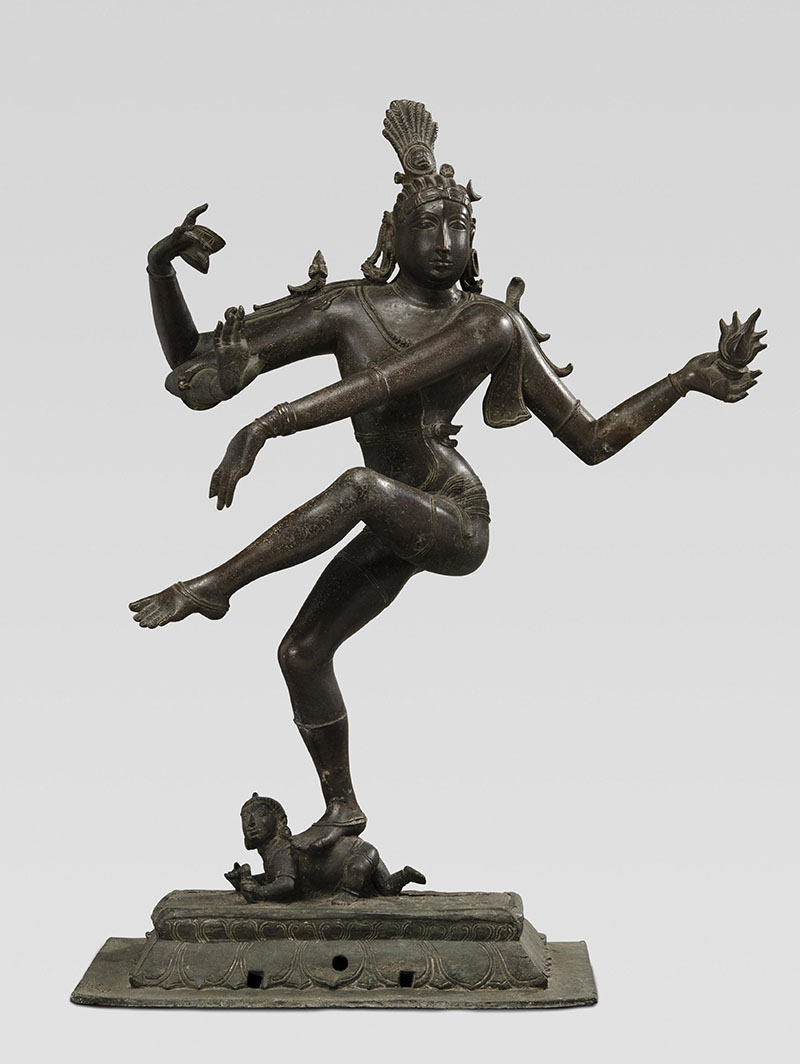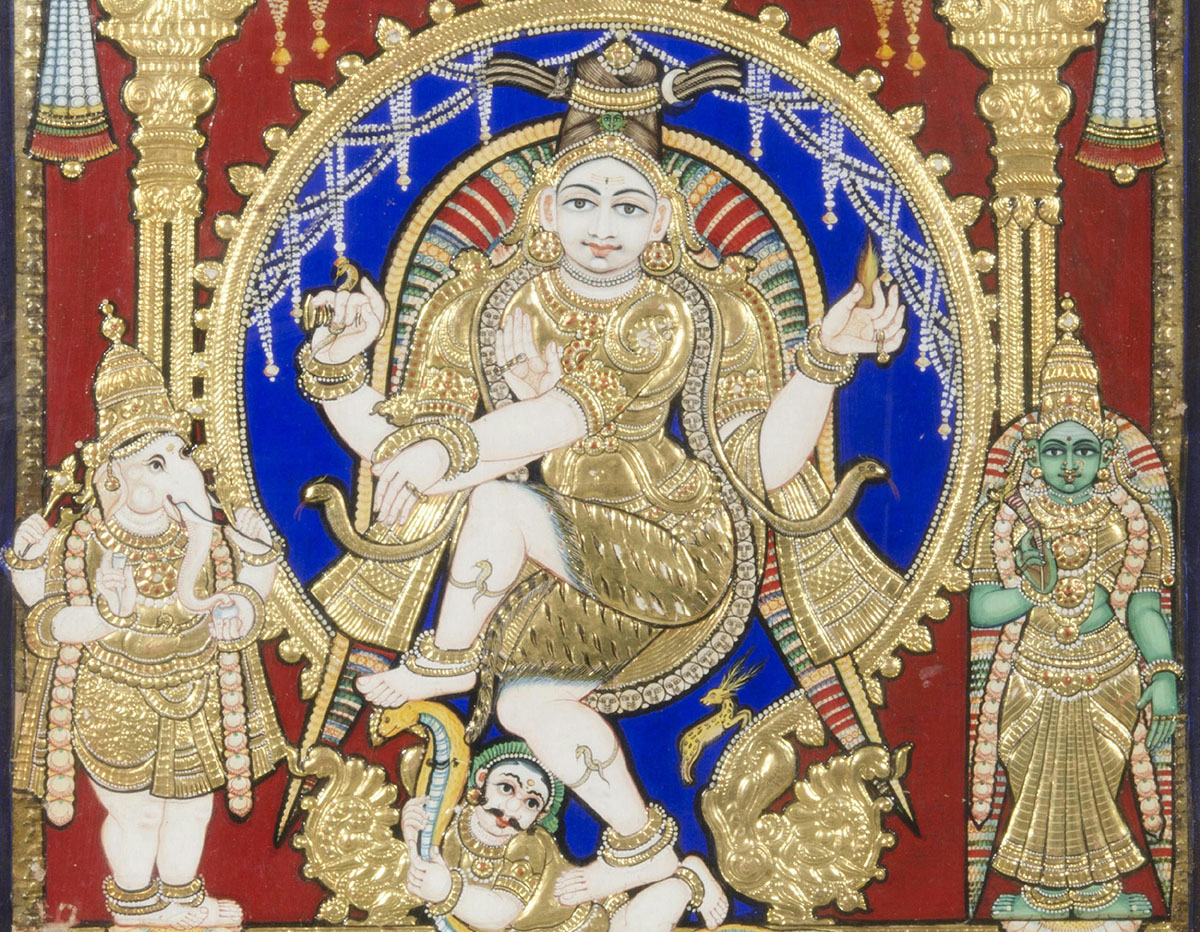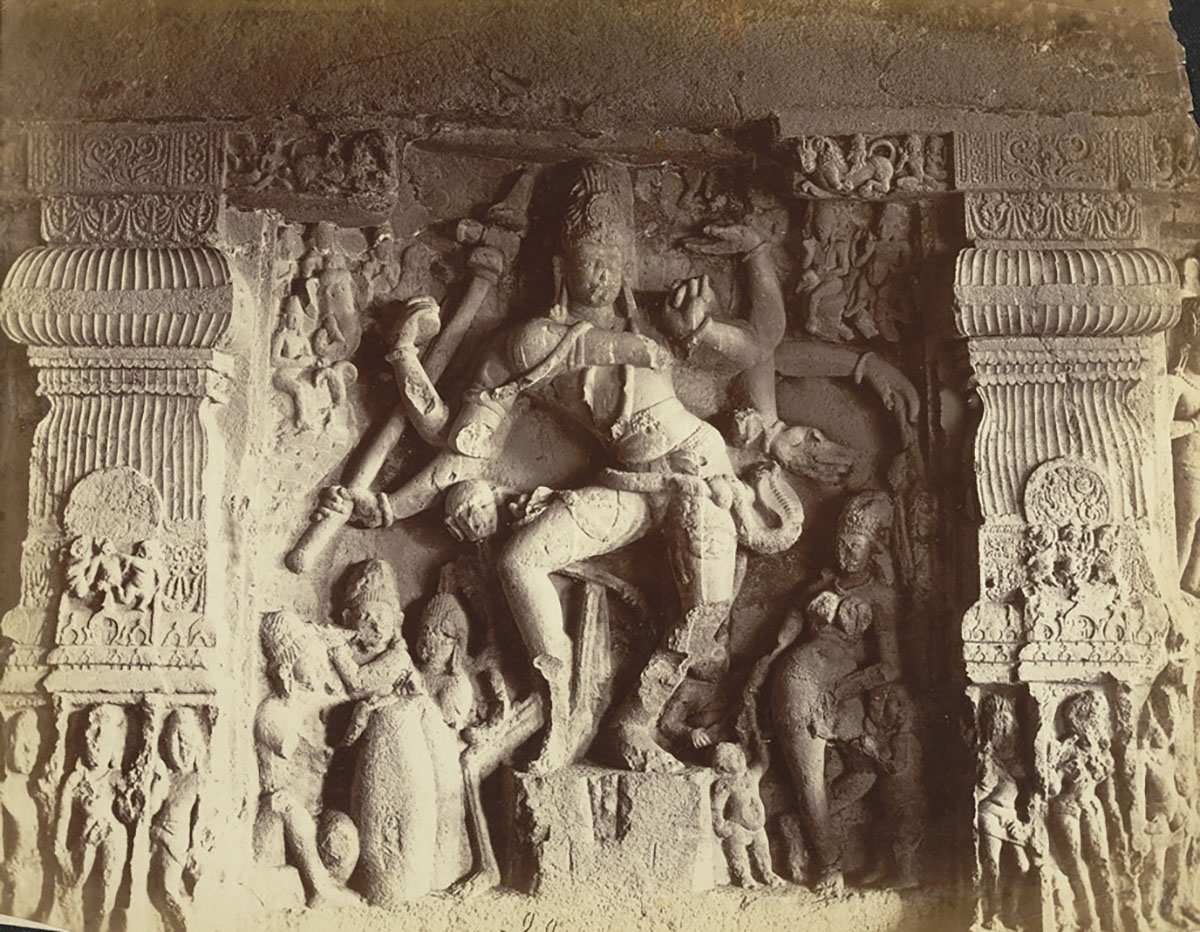ARTICLE
Nataraja
More frequent references to the god as Nataraja, coupled with more depictions in sculpture, began to appear in south India in the early tenth century. Some of these early Nataraja depictions include stone relief sculptures from the Sadaiyar temple, the Naltunai Ishvara temple, Gomuktishvara temple and the Pipileshvara temple in present-day Tamil Nadu. However, these figures are not consistent in their iconography, suggesting that the deity was still growing in popularity and that sculptors were still experimenting with his form. The earliest known bronze image of the Nataraja was cast around this time in the village of Karaiviram near Thanjavur.
The Thillai Nataraja temple in Chidambaram is mentioned as the home of a dancing Shiva figure in Bhakti poetry of the seventh and eighth centuries, and appears to have been the centre of a cult to the god. It received considerable patronage from the emerging Chola Dynasty in the tenth century, and the Nataraja figure came to be firmly situated in the political rhetoric of the dynasty. Continuing Chola patronage is linked to the gradual standardisation of the Nataraja image in bronze[a]. The growth of Chola power resulted in the spread of the god’s cult in the Kaveri river valley and delta, and Nataraja bronzes began to appear in temples commissioned by non-Chola patrons. Nataraja was also represented in mural paintings and sculpted in stone. The icon remained popular in the region until the collapse of the Chola Dynasty in the late thirteenth century, and received considerable scholarly attention from the late nineteenth century onwards.
The Nataraja icon as established by the Cholas continues to be one of the most recognizable symbols of South Asian art. New images are frequently produced by artisans for handicrafts stores; older images are the centrepieces of religious rituals in Tamil Nadu and can be found in museums such as the Metropolitan Museum of Art, New York; the British Museum, London; and the National Museum, New Delhi.
Bibliography
Our website is currently undergoing maintenance and re-design, due to which we have had to take down some of our bibliographies. While these will be re-published shortly, you can request references for specific articles by writing to hellomapacademy@map-india.org.









